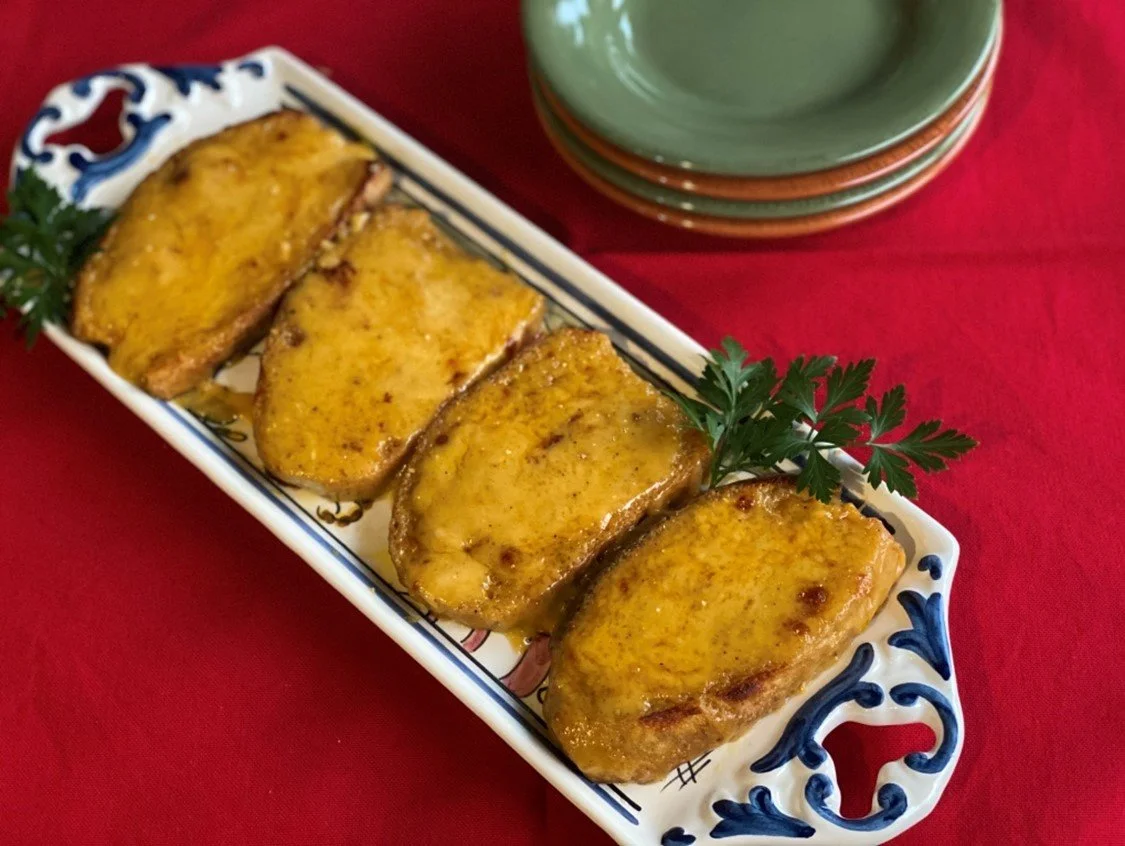For a printable version of this recipe, click here.
September 3rd is Welsh Rarebit Day! A 16th Century tale tells how God asked St. Peter to get rid of the Welsh from heaven, as they kept causing a ruckus. St. Peter stomped outside the Pearly Gates and shouted, “caws Pobi!” at which the Welshmen duly tumbled out of heaven excitedly, allowing the gates to be slammed shut behind them. Another tale about the name is that it’s a slur against the Welsh by the English. In a time when rabbits ran wild in Britain, the Welsh, according to the English, couldn’t manage to put one on the table. The impoverished Welsh could only afford to eat melted cheese on toast, so it became known as Welshman’s rabbit.
Welsh Rarebit, Caws Pobi, in Welsh, is a famous Welsh dish and a favorite treat for High Tea, which was enjoyed later in the day than Afternoon Tea. The name Rarebit means ‘rare’ (lightly cooked) and ‘bit’ (small portion).
This simple but tasty dish of toasted bread covered in cheese, mixed with mustard and beer, has been popular since the 1500s. It makes a wonderful light lunch dish served with a salad or can be cut into smaller portions for hors d’oeuvres.
Image and text courtesy of the DBE Colorado 2021 Calendar
Ingredients
8 oz grated Cheddar cheese
2 teaspoons flour
1 Tablespoon butter
Pepper to taste
1-2 teaspoons Worcestershire sauce
4 Tablespoons beer, or milk
1 level teaspoon dry mustard
Slices of bread, toasted on both sides
Directions
Put the cheese, butter, Worcestershire sauce, mustard, flour, and pepper in a saucepan. Mix well and then add the beer or milk to moisten. Don’t make it too wet.
Stir over a gentle heat until all is melted. When the cheese sauce becomes a thickish paste, stop stirring and leave it to cool a little.
Toast the bread on both sides.
Spread the sauce over one side of the bread and place on a foil lined grill pan under a hot grill. When brown and bubbly serve immediately.
Notes
Serves 2-3
The size of the bread determines the number of portions

